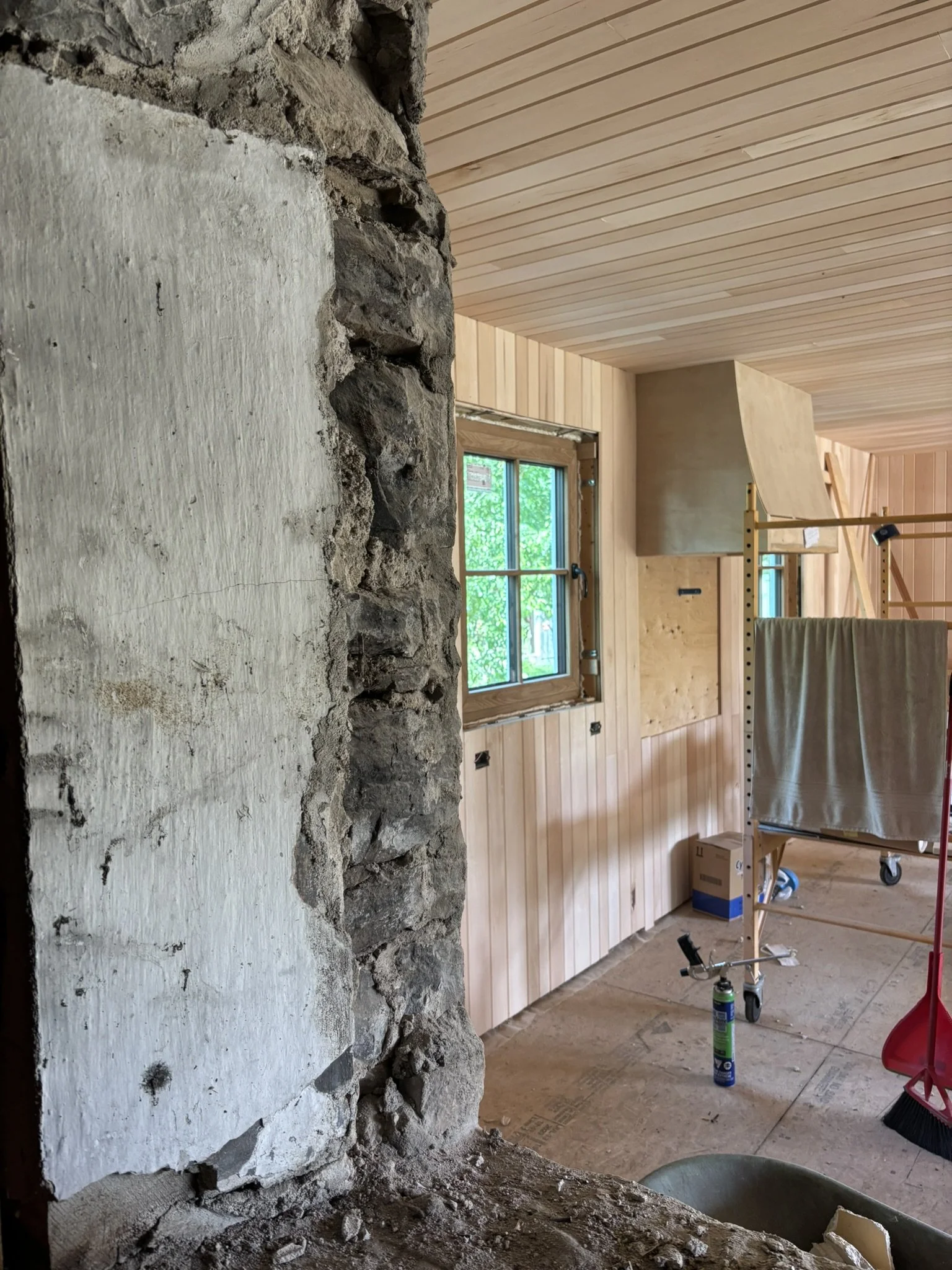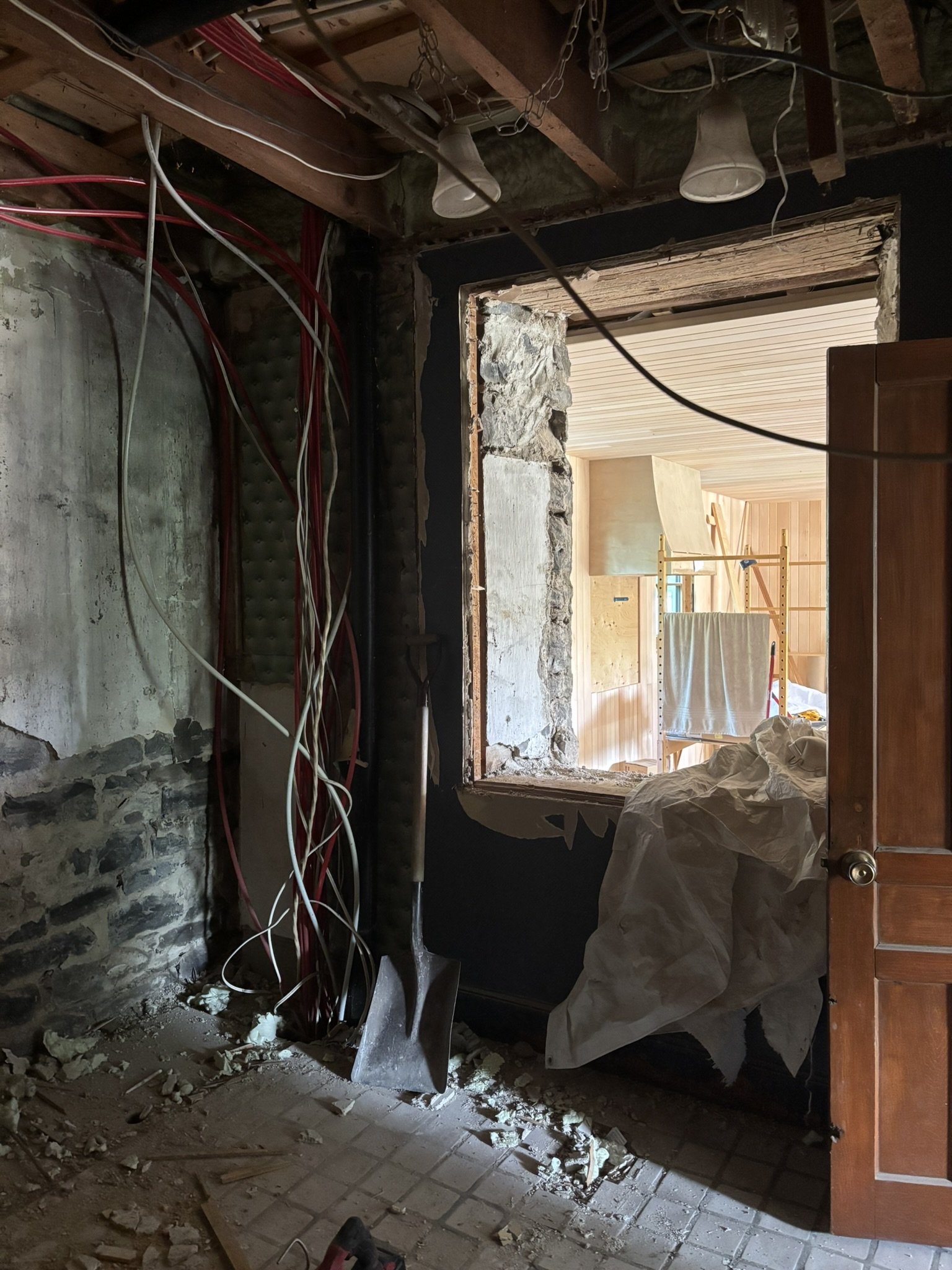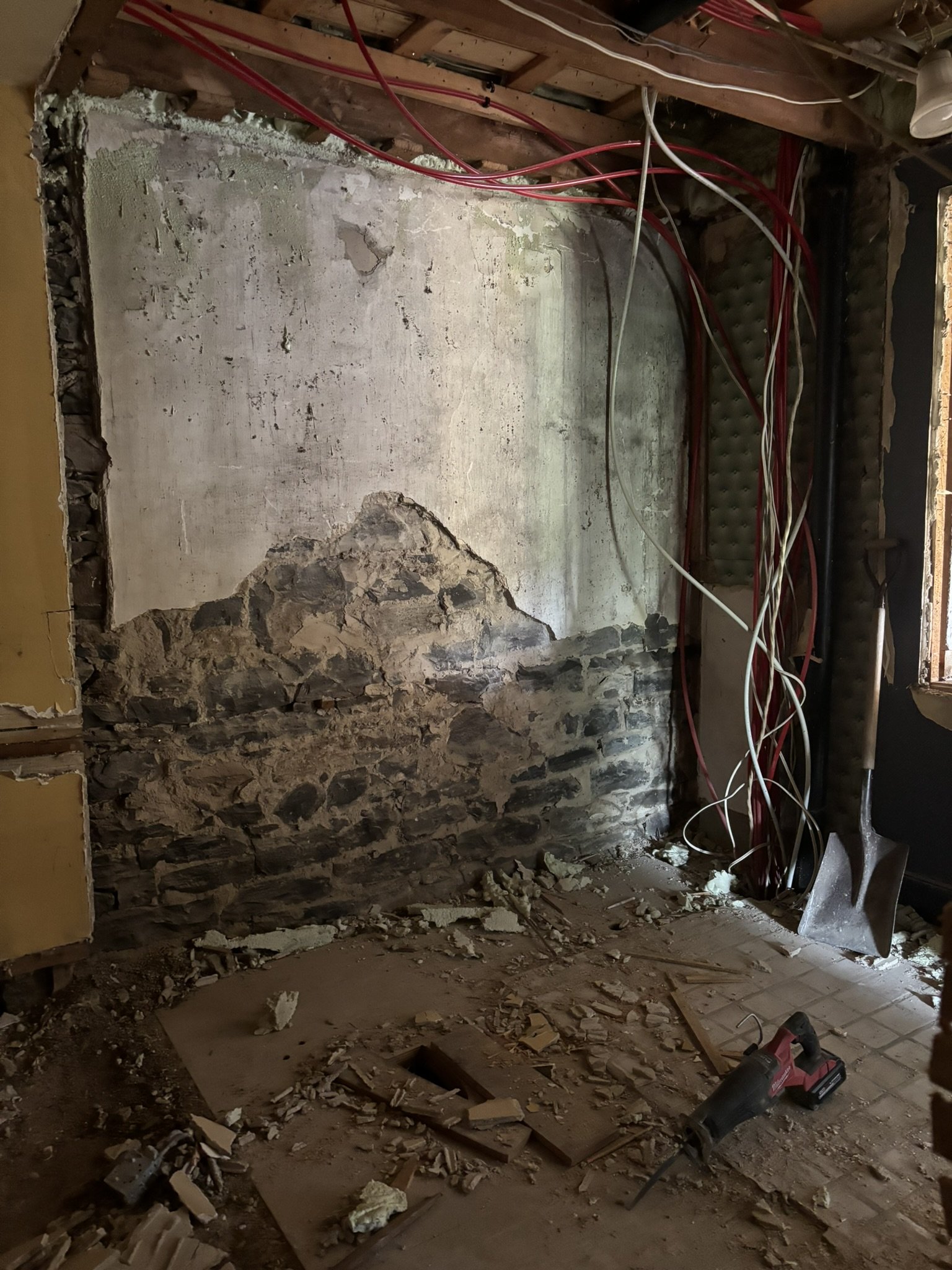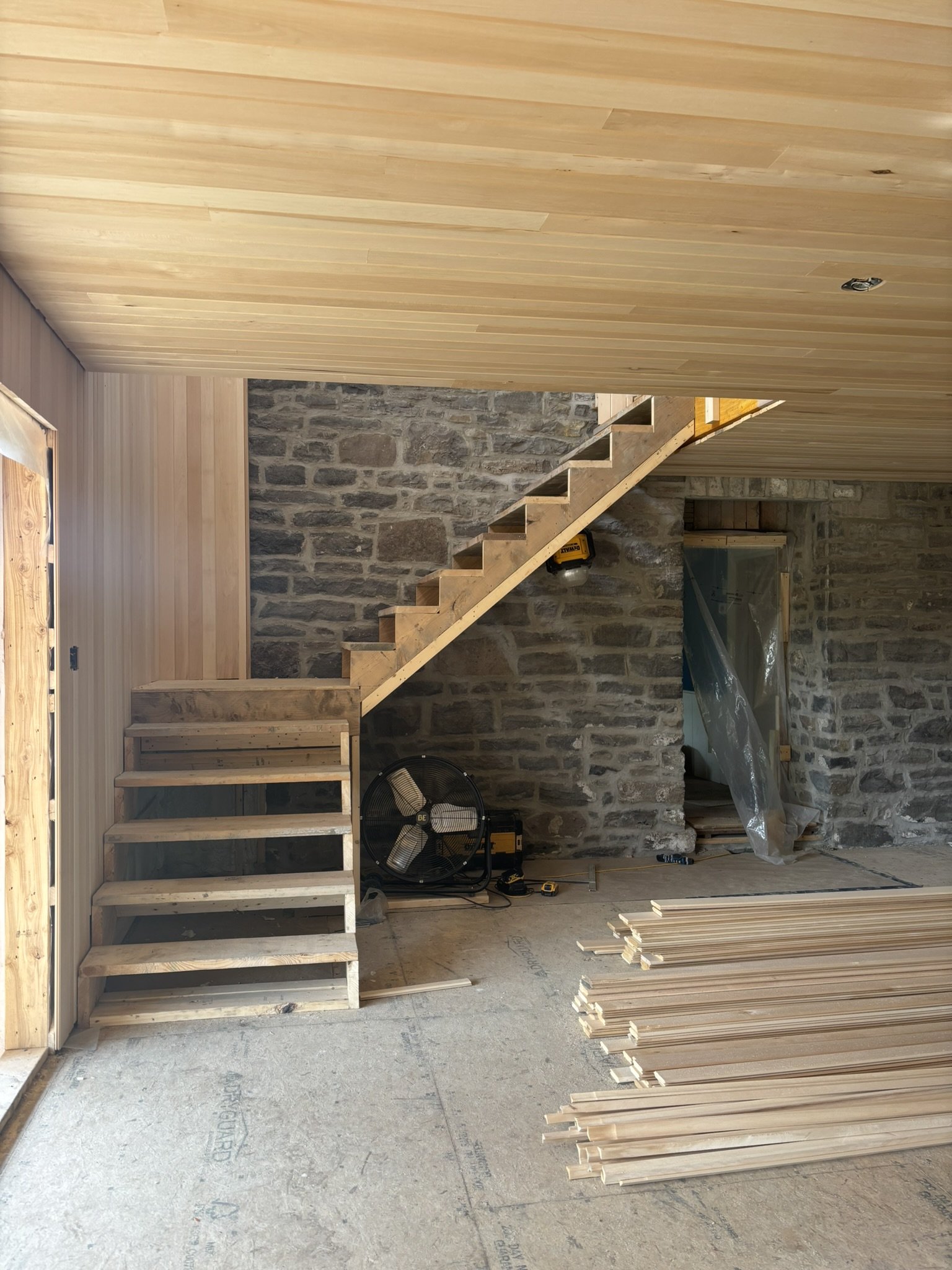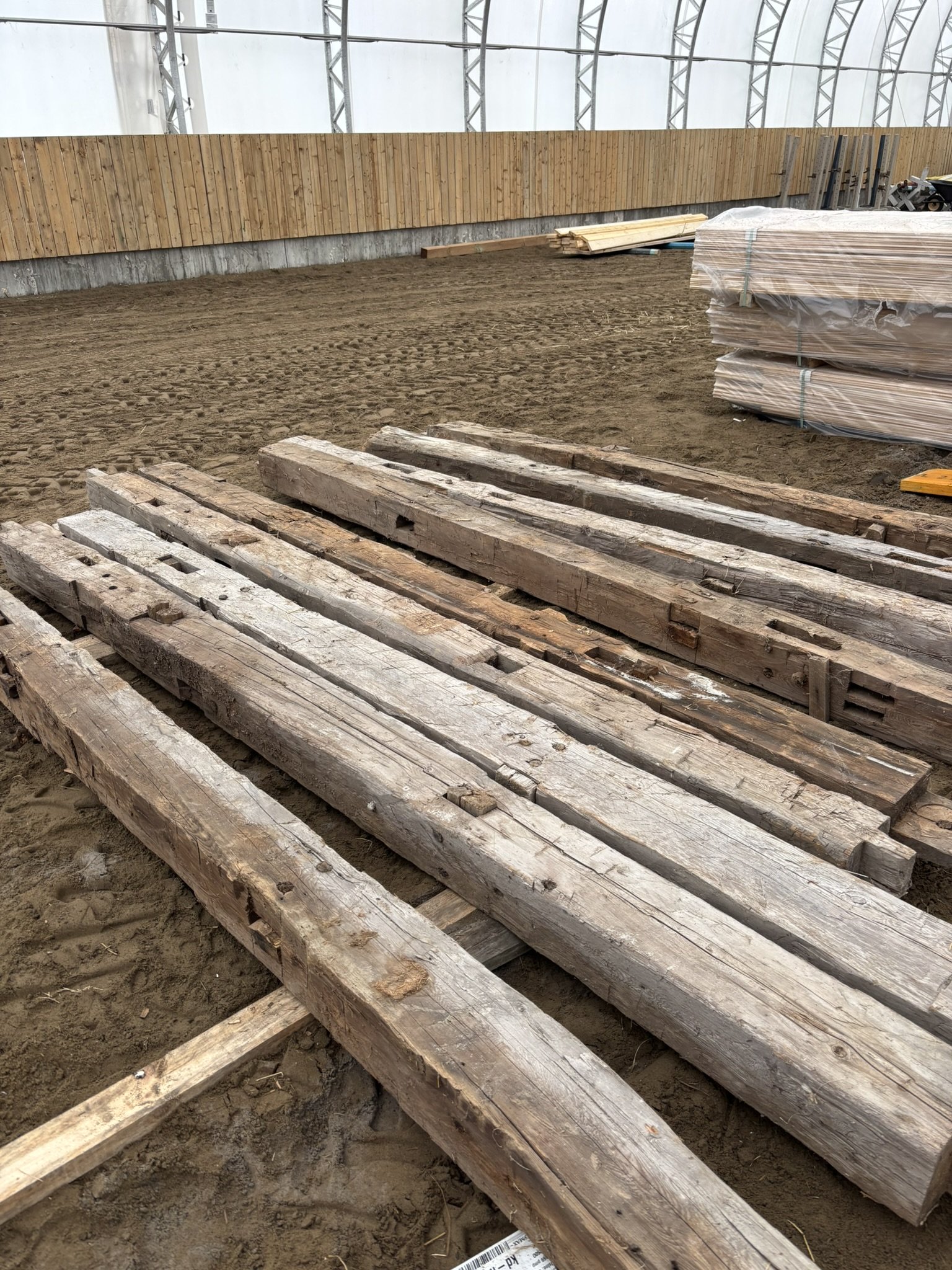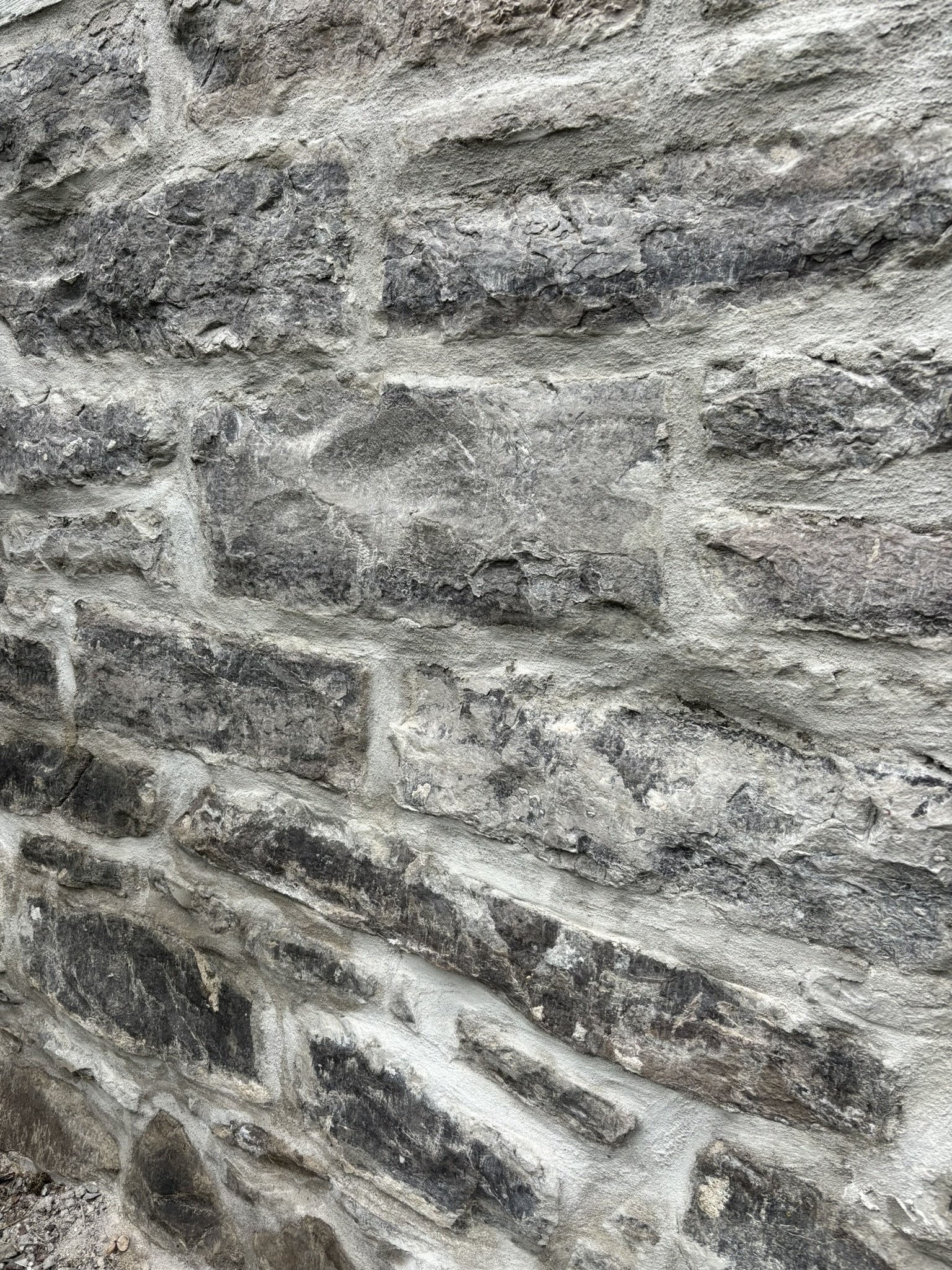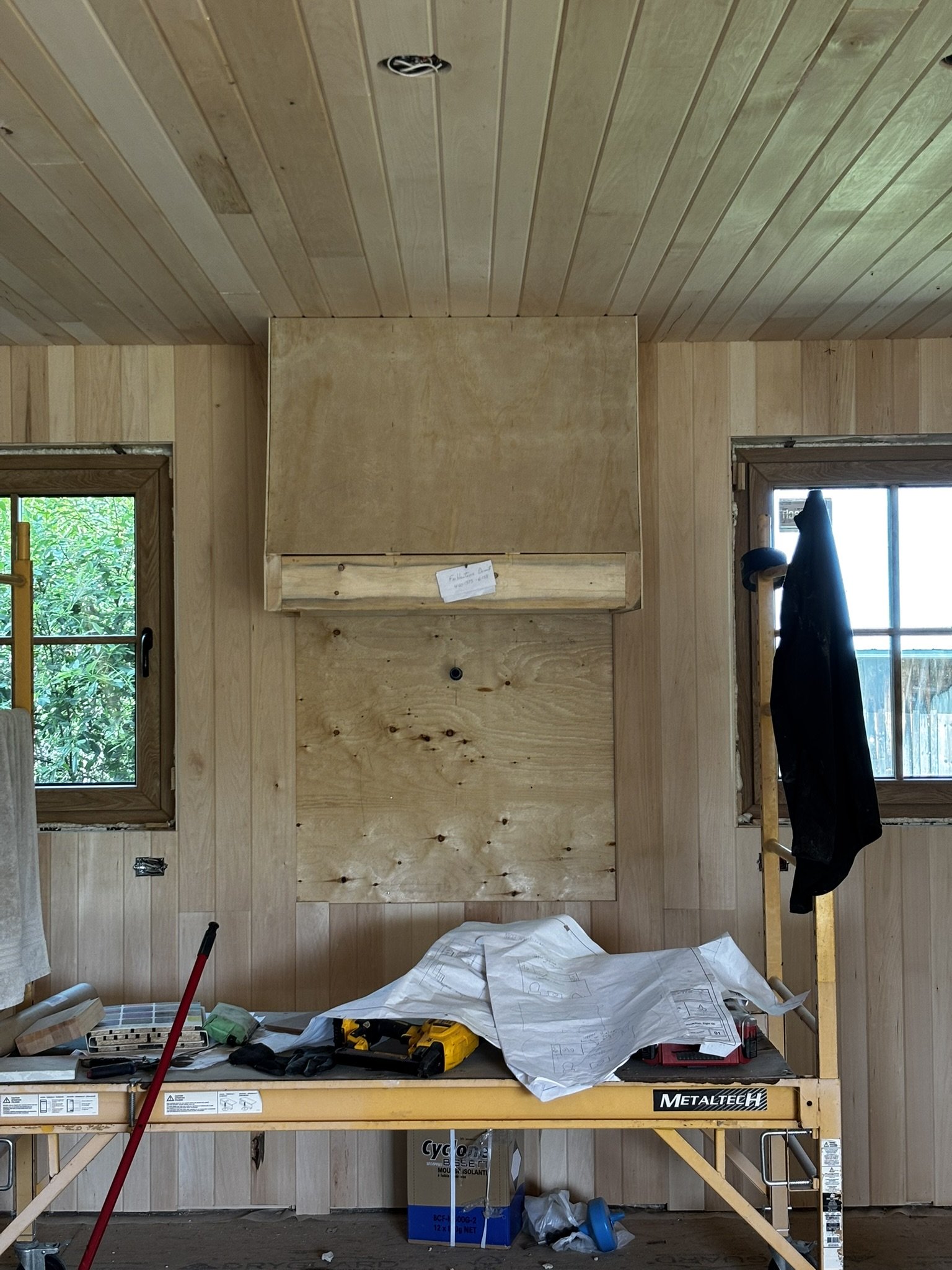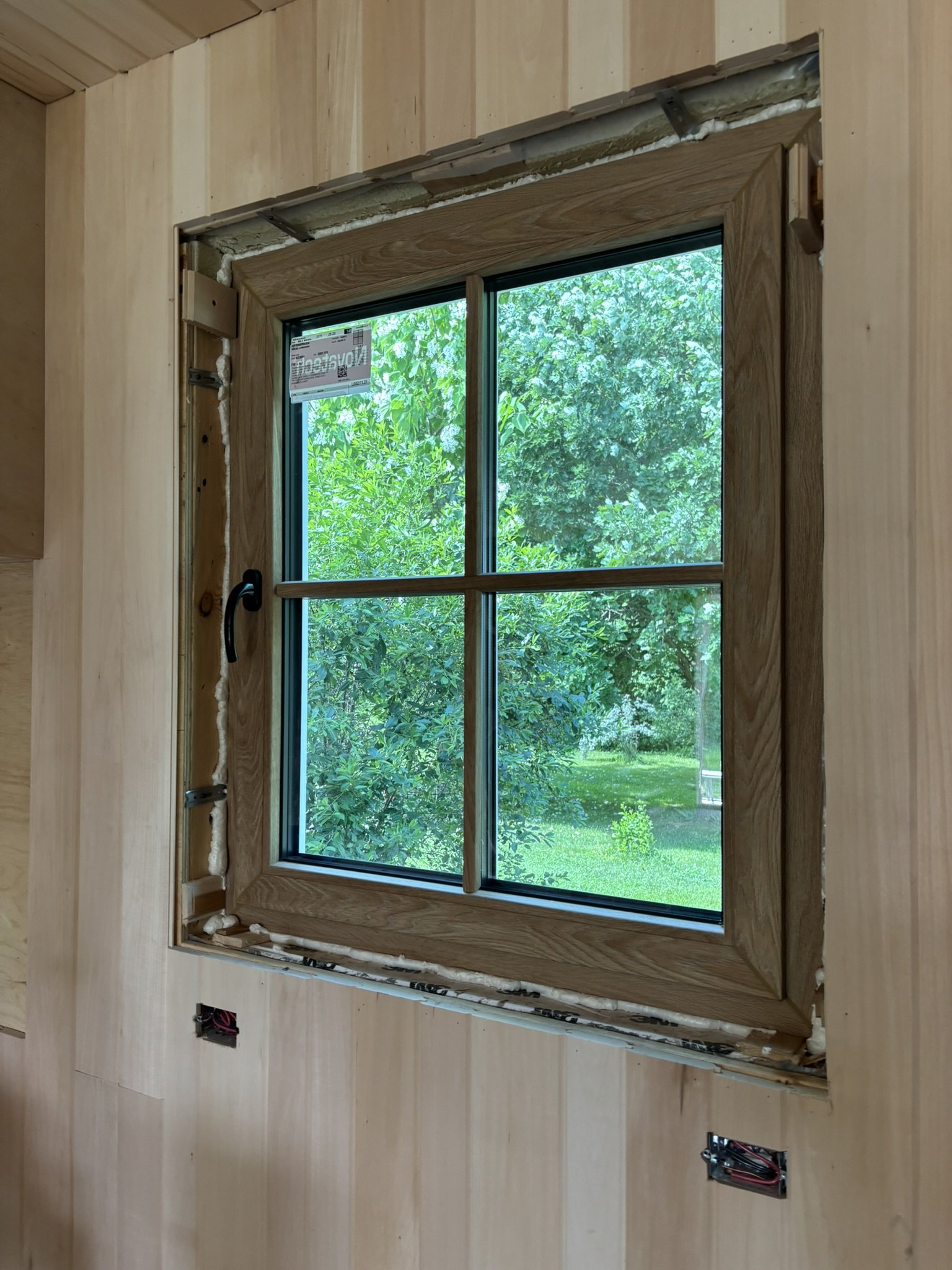There’s something special about old homes. The craftsmanship, the character, and the deep sense of history they hold. But adding space to one, especially a farmhouse nestled in the countryside, takes extra care and respect.
Right now, we’re in the middle of building an extension on an 1800s stone farmhouse on a beautiful rural property in Elgin, Quebec. This story-and-a-half home with its classic gable roof is full of charm and quirks that only a century-old farmhouse can have. The homeowners are deeply connected to their land and their home but needed more space and smarter layouts for how they live today. A hardworking kitchen, a walk-in pantry, and a proper mudroom to keep boots, coats, and all the gear organized. Practical updates that make daily life easier while honoring the soul of the home and its farms setting.
If you’re thinking about adding on to your own old home, here are a few honest things to keep in mind before you start:
1. Respect the Old Bones
When you work with a century-old home, the goal isn’t to erase the past. It’s to build on it thoughtfully.
In this project, that means:
Keeping the original stone walls exposed inside the new extension
Using old beams in new ways, like creating arches around door openings
Replicating the original baseboards and trim so the new spaces blend seamlessly
Reinstalling old wood doors and bringing in antique furniture to mix with new custom millwork
Wrapping the walls in tongue and groove, just as it was originally
The result? A space that feels like it’s always belonged.
Preserving original features like stone walls and wood trim is key. If you want to learn more about why keeping these authentic elements matters, check out my post on 2 reasons to keep original elements when renovating.
2. Expect the Unexpected
Old homes have their secrets. You often don’t uncover them until work begins.
When we removed the old extension here, we revealed parts of the original stone wall that needed serious attention. There were holes and gaps that required skilled masonry work. Since this wall is now part of the new interior, it mattered both structurally and visually.
And then there’s what’s underground. While digging for the new foundation, we hit massive boulders buried deep in the soil. It took extra time and effort to remove them which is just part of the reality when you’re building out here.
These “moments” are normal and having the right team who understands how to work with older homes and all the challenges that come with rural properties makes all the difference.
3. Blending Old and New
An extension should never feel like an afterthought. It should feel like a natural part of the home, both in how it looks and how it functions.
One of our favourite details coming together right now is the new range hood in the kitchen. It sits against soft panelled walls, framed by white oak windows that bring in the natural light. It’s a simple but thoughtful example of how old and new can blend naturally. Once everything is painted in a warm white, the space will feel bright, textured, and welcoming, the kind of kitchen that feels like it’s always been part of the home.
Final Thoughts
Adding space to an old home takes patience, planning, and a real respect for its story. But when done well, it’s worth every effort.
If you’re considering an extension for your century-old home, we’d love to help you plan it with care. We proudly serve Montreal, Quebec, and the surrounding rural Montérégie communities.
To help you begin your renovation journey with confidence, we’ve put together a free guide that walks you through three important things to consider before hiring a designer. It’s packed with insights to help you protect your home’s character while making smart decisions for your project. You can download it here.

